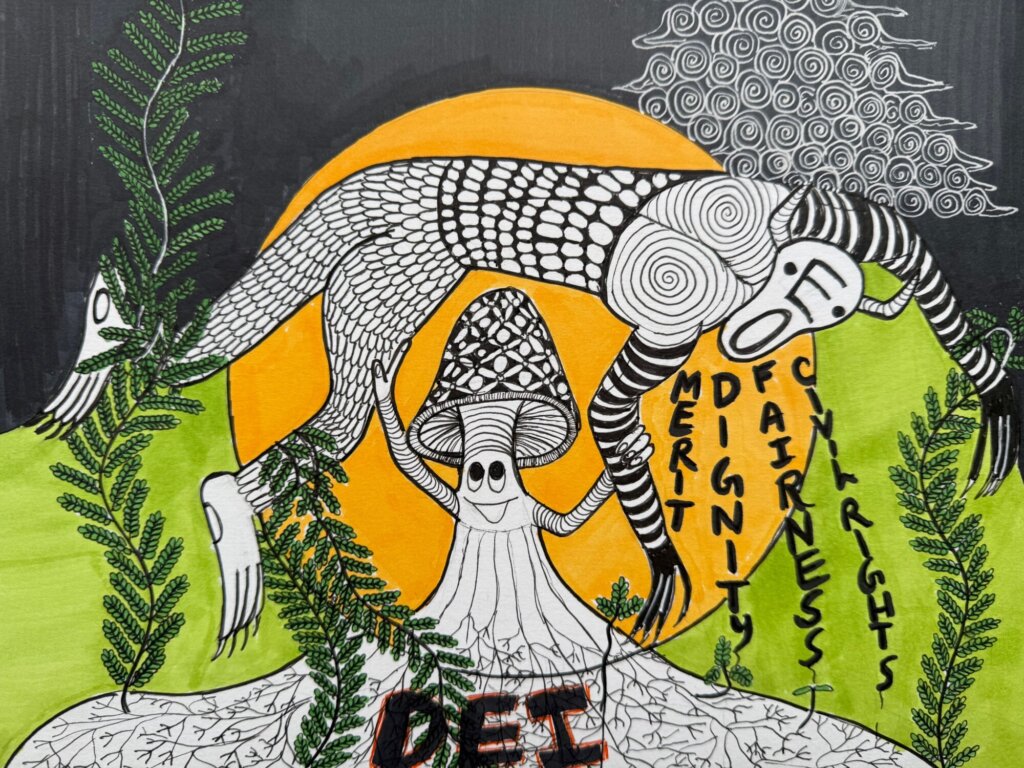Aparna
Published on
05 - 24 - 2017
Aparna
Published on
05 - 24 - 2017

We know diversity allows organizations to think out of the box, be more creative and innovative, problem-solve better and see around corners. But leading with diversity can undermine equity, especially when it comes to single identity experiences for people with marginalized identities.
To be clear, today we’re talking about single-identity spaces for people with marginalized identities. Single identity spaces for white folks or men, for example, is another topic for another blog post. Here, we’re referring to spaces created by and for people with marginalized identities, be that based on gender, sexual orientation, race, ethnicity, indigeneity, class, disability, or other identities that experience systemic barriers.
So what do single identity spaces look like?
Single identity spaces can look like single-identity programming, such as Conservation Legacy’s Ancestral Lands conservation crews, Northwest Youth Corps Queer Inclusion Crew, Idaho Conservation Corps’ Women’s Crew, and the Sierra Club’s Military Family and Veteran’s programs.
Single identity spaces can also look like organizations focused on specific communities and their relationships to the outdoors, conservation, or environmentalism. Some examples include: Outdoor Afro, Green Latinos, Green Muslims, Black Freedom Outfitters, Latino Outdoors, Brothers of Climbing, Venture Out Project, OUT There Adventures, and Women’s Wilderness.
Single identity spaces can look like a convening by and for people with specific marginalized identities to discuss issues and opportunities that impact them, such as the annual Green Latinos Summit, the 1991 First National People of Color Environmental Leadership Summit, and the subsequent 2002 Second National People of Color Environmental Leadership Summit, the 2017 People of the Global Majority in the Outdoors, Nature, and the Environment Summit, and the 2017 Women’s Summit for Outdoor Empowerment.
The argument
Diversity and inclusion champions will claim that we shouldn’t support single identity spaces because they are not diverse or inclusive. But equity and inclusion advocates will realize that single identity-spaces are not diverse across identity, and that is by design.
Because if we want to include marginalized communities in this movement that we call “conservation” and “recreation,” equity demands that we support their being able to gather in spaces for them and by them.
We define equity as an approach to ensuring everyone has access to the same opportunities. Equity demands that we examine barriers and disadvantages people experience based on their identities and to address them. In the conventional outdoor, environmental, and conservation space, these barriers may include:
So why should we all work to support single identity spaces for people with marginalized identities?
Single identity spaces are also important for reasons beyond equity:
So if you’re grappling with whether to support a single identity effort, drop that diversity flag and lead with equity, and you’ll find it’s a lot easier to walk the talk.
Dear Avarna community, We’re only four months into four years of this presidential administration, and the attacks on everything our…
Read full post about Staying the Course: On EOs, Education, ERGs, and SailingAvarna Community, It is with nearly all the emotions you might find in an emotions wheel that I am announcing…
Read full post about Farewell, AvarnaThe current administration’s anti-DEI Executive Orders have sparked varied responses in the nonprofit and private sectors—some organizations are defending DEI…
Read full post about DEI Jujitsu: Flipping the Backlash to Reframe Our Work

